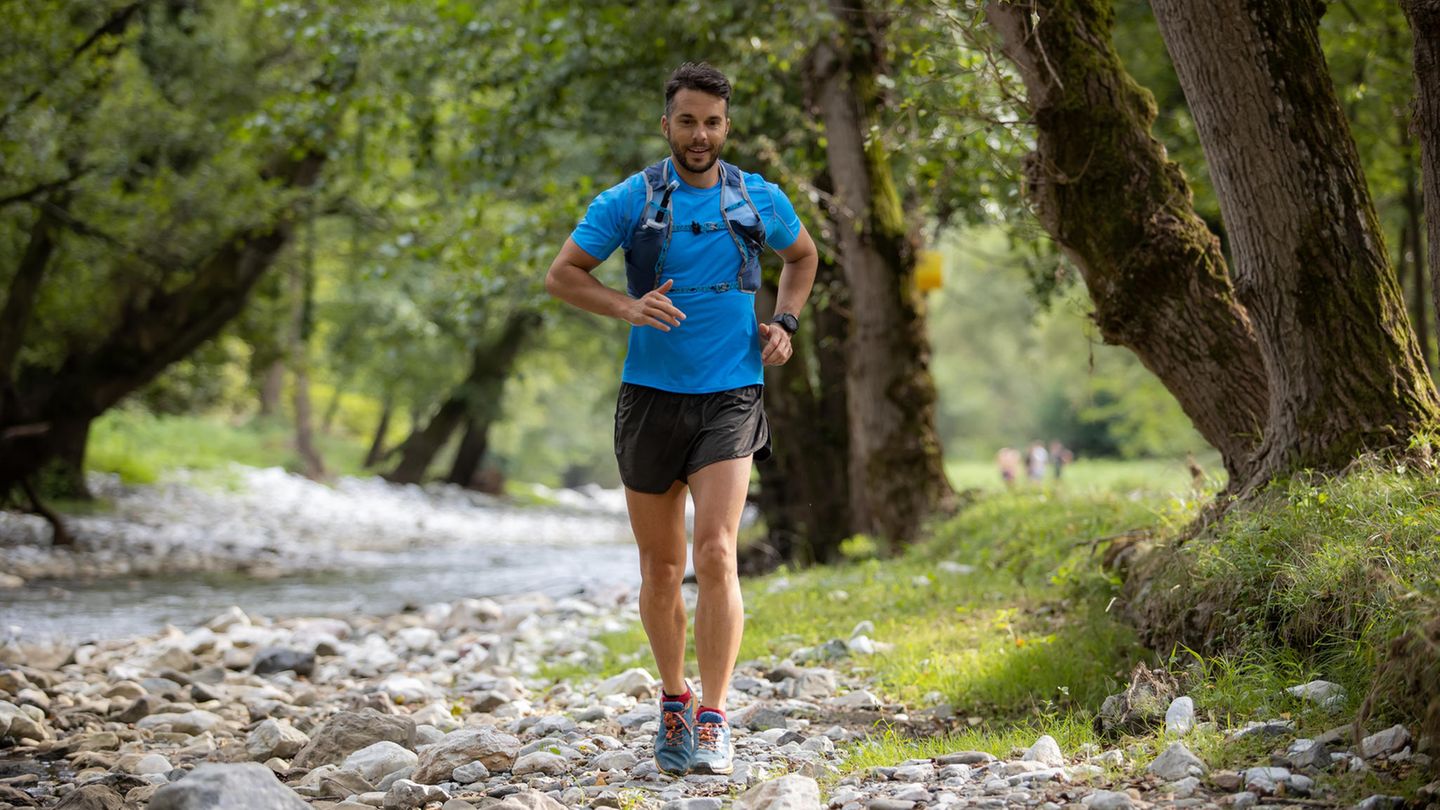Trail running is not a sport for idiots. On the contrary: jogging away from the hustle and bustle of the city is a balm for body and soul. star clarifies which equipment is important for cross-trails and runs over hill and dale.
There are things in life where there is no middle ground. Running, for example. Some people love it, others can’t do anything with it. The author of this piece, himself a not so untalented amateur runner, knows both extremes. People who simply cannot understand why other people voluntarily put on running shoes and try to jog five, ten or even more kilometers around. Just because. And he knows those who do exactly that. There are a lot of them in Germany. According to a 2023 survey, almost six million people lace up their running shoes several times a week. Most of them to stay fit for everyday life, keep their body and mind in shape, release happiness hormones or earn a beer afterwards. All fair and understandable even for outsiders. A much smaller proportion tend to do things that make non-runners just shake their heads in confusion and incomprehension.
Trail running: These categories exist
Trail running is a trend that more and more runners are joining. Some don’t even notice it. Trail running means nothing other than running away from paved roads and paths. The routes lead through the terrain on more or less wide paths. There are different types of terrain. By definition, the 5-kilometer lap through the park around the corner is also a cross-country run. Runs on forest or gravel paths are the moderate form of trail running and are also known as urban trail running. It becomes much more demanding when inclines and declines come into play. Cross-trail runs go through difficult terrain, over roots, sticks and stones. Only so-called trail adventures can top that. In the extreme form of trail running, endurance athletes run in (high) alpine terrain and sometimes also away from marked paths and trails.
By the way: In 2015, the world athletics association World Athletics officially recognized trail running as a discipline. Since 2018, the best trail runners in the world have been competing for the crown of the Golden Trail Series in a series of competitions over distances between 22 and 42 kilometers.
Trail running shoes: What beginners should pay attention to
Let’s look at the special requirements for trail running clothing. Since the main difference between road and terrain is that you run on completely different surfaces, we first focus on the shoes. And here specifically on the sole of the running shoes. While traction is not important when running on the road or footpaths, it plays a crucial role in trail running. Good grip is particularly important in damp or even wet conditions – not just on muddy, soft ground riddled with roots. Depending on how varied and demanding the route is, trail running shoes (e.g. the ) have a moderate to strong profile and corresponding studs under the sole. The sole should also be particularly robust and protect the soles of the feet from sharp stones or other sharp-edged obstacles. Compared to road running shoes, shoes for trail running are rather stiff and inflexible. Even soft cushioning, which can be helpful on asphalt, is counterproductive off-road. Trail running shoes must above all give the feet support and security on rough terrain.
Runners who only plan to do a few trail runs a month – mostly on forest floors or field paths – tend to choose more moderate and light models when choosing shoes. Comfort should always be the top priority here. The feet get this best in a lighter all-rounder with a stud length of no more than four millimeters, such as the The rockier and trickier the terrain, the higher the studs should be. Shoes for alpine or even high alpine terrain also need protective midsoles and protective elements on the instep. Last but not least, water-repellent upper material keeps feet dry, even when water comes from above. Gore Tex is the keyword here.
The most important criteria for trail running shoes at a glance:
- distinctive profile with studded sole
- rigid overall construction
- rather hard damping
- Water-repellent outer material if possible
- Protective elements on the instep
- rigid midsole (especially for cross-trail and trail adventures)
Trail running clothing: This is important when buying
For moderate trail running, you don’t need to completely re-dress yourself – apart from the aforementioned exception with the shoes. Nevertheless, it is worth thinking about optimizing your outfit. Especially if you want to try out longer runs on rougher terrain soon. First of all, and this is the same as with classic running clothing, both the tops and the running shorts should be as light and quick-drying as possible. For trail running, the pants can be a little longer. Combined with a tight-fitting inner short (as with the or the ) the thigh muscles can also be supported. Freedom of movement is only of secondary importance in this case. And there is another special feature of running shorts for trail running. Many models are equipped with a wide waistband made of stretch material, which sometimes also has a small pocket. The wide waistband prevents painful friction and pressure points in the hip area, especially on longer distances.
What As far as running is concerned, the same rules apply to trail running as to running in the city. Quick-drying materials are just as important as a comfortable, but not too loose cut. Everything else is, as is often the case, a matter of taste. Trail running does not place any particular demands on running socks either. Short, medium or half-length – runners are spoiled for choice here. A little stretch is never a bad thing and running socks should not be too small either. If in doubt, always buy a size larger.
Drink, drink, little runner, drink!
Let’s move on to a special part that is becoming increasingly popular, especially on longer distances, and has not been a rarity in trail running for several years. or hydration packs have become standard – especially for trail runs in the mountains. The reason is simple: in the mountains, runners usually have no other option than to provide for themselves. Hydration vests are also becoming increasingly popular in city marathons. So-called soft flasks are often included as accessories or even included. These are light and flexible bottles made of soft plastic that can be stowed in the breast pockets and are therefore always within reach.
Some vest models (e.g. the Active Skin by Salomon) can be a This is particularly interesting for distances beyond the half marathon. For shorter distances, a running belt is sufficient, in which you can at least store a small water bottle, a key or snacks such as energy bars or gels. Here you can read the starRunning Belt Test 2024.
Trail running clothing: These gadgets should also be on board
More information can be found here.
Source: Stern
I am Pierce Boyd, a driven and ambitious professional working in the news industry. I have been writing for 24 Hours Worlds for over five years, specializing in sports section coverage. During my tenure at the publication, I have built an impressive portfolio of articles that has earned me a reputation as an experienced journalist and content creator.




